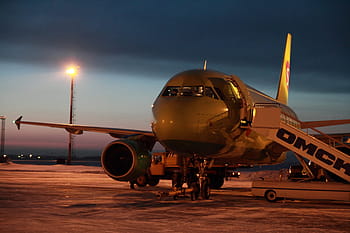Airlines need to reevaluate their baggage regulations as a vital tactic to secure returnee consumers as Asia’s aviation sector experiences outstanding financial performances. The epidemic severely lowered passenger demand, which resulted in an increase in cargo demand. However, as the demand for cargo declines, airlines are taking advantage of the freed-up cargo capacity to raise the amount of passenger baggage allowed.

After three hard years of Covid-19, the aviation industry in Asia has seen a wave of massive profitability, including records at Singapore Airlines Ltd. and Cathay Pacific Airways Ltd.
Darker clouds are developing in a significant area of the industry, though, and they should prompt airlines to reconsider how they handle one of the most divisive aspects of travel: luggage.
Change for travelers
Many travelers are discovering that their points have expired or that their travel habits have changed as they pull out their frequent flyer cards for the first time in years.
Measures to be taken by the Airlines
Executives of airlines should prioritize securing these returnees. Fortunately, a low-cost route for doing so is emerging in front of them due to the collision of two unconnected advancements in aviation.
Past statistics
In April 2020, demand for passengers fell by 99% as governments all over the world closed their borders. According to data provided by the Association of Asia Pacific Airlines, whose members include Singapore Airlines, Cathay Pacific, Japan Airlines Co., and Taiwan’s China Airlines Ltd, the load factor, or the percentage of available seats that were occupied, decreased to 28%.
Airlines began storing their aircraft in the deserts of Australia (Alice Springs) and Spain (Ciudad Real) in order to reduce expenses as a result of a decline in demand.
Cathay had 92 passenger aircraft, or 44% of their passenger fleet, on layoff as of the end of 2020. As a result, utilization rates in the area have stopped declining.
According to AAPA data, passenger capacity had been reduced to just 5% of the peak levels observed at the beginning of the pandemic, and as a result, they actually started to inch back up.
Airlines like Cathay began turning passenger jets into hybrid freighters known as “preighters.” The airline with its headquarters in Hong Kong had removed the seats from seven of its Boeing Co. 777s by the end of 2021. Industry-wide freight revenue increased steadily. Singapore Airlines’ cargo sales for the year ending in March 2022 increased by 2x over fiscal 2019 levels. These patterns are currently being reversed.
Effect of the measures
The need for cargo increased as passenger numbers decreased, reaching a peak in December 2021 as consumers made online purchases of technology and pandemic supplies. Less people travelling and more cargo were two developments that were about to produce a major issue because belly cargo—the term for the hold of passenger aircraft—is where approximately 50% of all aviation freight, including mail, travels.
Cathay Pacific and China Airlines often make about a quarter of their money by transporting cargo rather than passengers. Because so many of those planes were unavailable during the pandemic, depending on passenger flights to transport freight became a weakness.
Shipping costs have decreased, which has reduced air’s competitiveness and lowered freight rates. However, contrary to what we typically anticipate in difficult economic times, “revenge travel” is becoming more popular.
China Airlines announced its greatest second-quarter earnings in 13 years, Singapore Airlines’ net profit doubled in the June quarter to a record, Cathay’s first-half operating income was at an all-time high.
Even though many aircraft have been cleaned up and put back into service, passenger capacity in Asia is still about 30% below what it was in January 2020, which limits the potential profitability for airlines. Over the course of the following year, more will be made available, including newly delivered planes that the pandemic had delayed.
This not only translates into more seats for the increasing number of people who want to travel by air, which is what airlines want, but also into a significant rise in freight capacity even as demand keeps declining.
Present statistics of the Airlines
In Asia, cargo load factors earlier this year returned to pre-Covid levels. But they’re now doomed to fall considerably more, and there’s a significant probability they’ll sink below 50% for the first time in a decade.
Airlines can only lower prices further in order to increase demand; Cathay’s cargo yield decreased by half in the first half of 2017 compared to the same period the previous year.
What more do the Airlines need?
However, there is still one more thing to try: offering passengers more luggage room in exchange for the empty cargo space. To cover costs and prevent heavy check-in baggage that can delay loading and unloading of aircraft, carriers charge for excess baggage.
Increasing the amount of baggage incurs expenditures because each item is handled by different persons in various airports and nations. Airlines can therefore utilise increased luggage limits as an incentive for loyalty rather than increasing them for all passengers, paired with aggressive marketing activities to encourage would-be platinum members to make reservations with them.
Passenger transport is experiencing a resurgence worldwide, but capacity is limited and competition is fierce. Airlines have known for a long time that maintaining an advantage requires loyalty, and the time has come to make more use of this one resource that is never in short supply.













